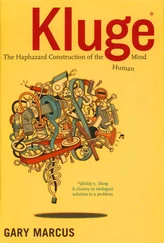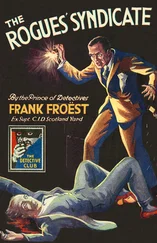1 ...7 8 9 11 12 13 ...18 Schrödinger subsequently extrapolated the three lectures into a book of less than a hundred pages with the same title: What Is Life? This was published the following year. In what is now a very famous book, Schrödinger popularised a quantum mechanics interpretation of the gene that had been proposed earlier by another distinguished physicist, the previously mentioned Max Delbrück.
In the opening pages of the first chapter, Schrödinger posed the question: ‘How can the events which take place within a living organism be accounted for by physics and chemistry?’ Admitting that at the time of writing the prevailing knowledge within the disciplines of physics and chemistry was inadequate to explain this, he nevertheless hazarded the opinion that ‘the most essential part of a living cell – the chromosome fibre – may suitably be called an aperiodic crystal’ . The italicisation is Schrödinger’s to emphasise, as he further explained, that the physics up to this time had only concerned itself with periodic crystals, the kind of repetitive atomic structures seen, for example, in very obvious crystalline compounds such as gemstones.
What did he mean by an ‘aperiodic crystal’?
He explained this with a metaphor. If we examined the images within the pattern of a wallpaper, we could see how the pattern was repeated, over and over. This was the equivalent of a periodic crystal. But if we examined the complex elaboration of a Raphael tapestry, we saw a pattern of images that did not repeat themselves, yet the pattern was coherent and meaningful.
Schrödinger intuited further.
It was the chromosomes, or more likely an axial fibre much finer than what was visible under the microscope, that contained what he termed ‘some kind of code-script’ that determined the blueprint of the individual’s development from fertilised egg to birth – and further determined the functioning of what we would now term the genome throughout the lifetime of the individual.
That intuition would provide the drive for a naïve but highly inquisitive young American, called James Dewey Watson, to join forces with a slightly older but equally inquisitive Englishman, Francis Crick, and form what is now seen as one of the most famous partnerships in scientific history. Both men would take their inspiration from Schrödinger to search for the aperiodic crystal that coded for DNA.
*
Watson was an exceptionally bright child who lived at home with his family in Chicago while attending the local university. He enrolled when aged just 15 and he graduated, aged 19, in 1947 with a bachelor’s degree that included a year studying zoology. His teacher of embryology would remember him as a student who showed little interest in lectures and made no notes whatsoever, so it was all the more puzzling when he graduated top of his class. Watson would subsequently admit to a habitual laziness. Though vaguely interested in birds, he had deliberately avoided any courses that involved chemistry or physics of ‘even medium difficulty’. This self-indulgent student left Chicago with only a rudimentary knowledge of genetics or biochemistry. As part of his education he had attended lectures by the geneticist Sewall Wright, who had devised a mathematical system of studying population genetics. Wright’s course included a discussion of Avery’s work, but Watson would subsequently confess that he took little notice. He would also confess that the inspiration for his subsequent interest in the ‘mystery of the gene’ was Schrödinger’s book, What Is Life?
Inspired by this book, Watson landed a research fellowship at Indiana University, at Bloomington. He was delighted by the move because Nobel Laureate Hermann Joseph Muller was the local Professor of Zoology. As early as 1921 Muller had observed that the genes of the fruit fly underwent mutations – as did the genes of the bacteriophages – the viruses that had inspired Hershey and Chase. Watson was intrigued by the fact that phage viruses could be manipulated in test tubes. Their reproductive cycles were extremely brief – an important consideration for an impatient young scientist. There were simple test systems that could be employed to follow their life cycles, and numbers, in a way that would open up new angles from which to attack the gene problem. All you had to do was carefully design an experiment aimed at probing some particular aspect of the gene problem and the whole shebang could be completed in a matter of days. This intimate, if brutal, interplay between phage viruses and their host bacteria allowed scientists to figure the complex chemistry of genes, genetics and chromosomes.
Curiously it would not be Muller but another phage researcher, Salvador Luria, who would now give shape and direction to the young scientist’s growing infatuation with the gene.
The Italian-born Luria was another European scientist – a microbiologist, like Avery – who found refuge in America from the European war zone. By now he had entered into a working collaboration with Max Delbrück, who was Professor of Biology at the California Institute of Technology. In 1943 Luria and Delbrück designed and conducted an experiment that demonstrated that genetic inheritance in bacteria followed precise evolutionary principles. This experiment became one of the foundation stones of modern Darwinism. That same year Delbrück befriended another microbiologist called Alfred Hershey, who would subsequently write the key DNA paper with Martha Chase. In a letter to Luria, Delbrück summarised Hershey as follows: ‘Drinks whiskey but not tea. Likes living in a sailboat … Likes independence.’ The three scientists joined forces to become the nucleus of a cooperating and mutually supportive network of scientists that would become known as the ‘phage group’. Delbrück would subsequently explain that they would be a group only in the sense that they communicated freely on a regular basis, and that they told one another what they were thinking and doing. In this way a loose creative movement grew around the two European expatriate scientists, all working towards the common ambition of figuring out how genes worked.
Luria, Delbrück and Hershey now posed some interesting questions. How does the phage virus actually get into the bacterium? How, once inside, does it multiply? Does it multiply like a bacterium, growing and budding off daughter viruses? Or does it multiply by an entirely different mechanism? Is this multiplication some complex physical or chemical process that could be understood in terms of known physical and chemical principles? Through making use of the phage reproductive system, they hoped to solve the mystery of the gene. To begin with it all seemed simple in principle, but as experiment followed experiment and year followed year, they found themselves no closer to the answer.
Up to 1940 or so, people like Delbrück and Luria had assumed that viruses were simple. They had little to go on since the majority of viruses were so minuscule they could not be seen with any clarity through the ordinary light microscope. They would even talk about them as if they were akin to protein molecules. Luria would come to define phage viruses, in a misleading oversimplification, as extensions of the bacterial genome. But with the invention of the electron microscope, by the German company Siemens, even the smallest viruses, including bacteriophages, would soon become visible for the first time. And when they did become visible, they proved to be more complex than the two scientists had initially conceived.
Many phages had a head that was cylindrical in shape, with a narrow sheath below it, as tall as the head, and a base plate with six spikes with fibres attached. Now that they could visualise phages in the process of infecting their host bacteria, something struck Delbrück and Luria as exceedingly odd. The viruses didn’t actually pass through the bacterial cell wall. What they appeared to do was to squat down against the wall and inject their hereditary material into the cell. In 1951 a phage researcher called Roger Herriott would write to Hershey, ‘I’ve been thinking that the virus may behave like a little hypodermic needle full of transforming principles.’ This became the background to Hershey and Chase’s experiment in which they confirmed that that was precisely what happened. The virus behaved exactly like a hypodermic syringe; the tail and its elongated fibrils would attach to the bacterial wall and the phage would then inject its viral DNA in through the bacterial wall to take over the bacterium’s own genetic machinery, the viral genome compelling the bacterial genome to construct what was necessary for the generation of daughter viruses. In effect, the infected bacterium became a factory for the production of daughter viruses.
Читать дальше












